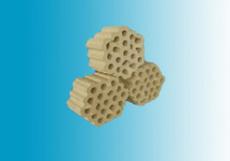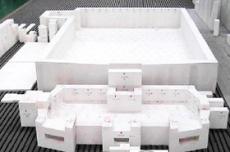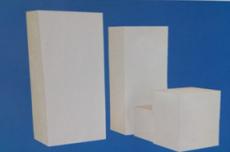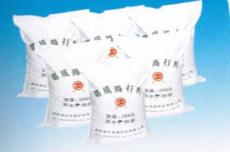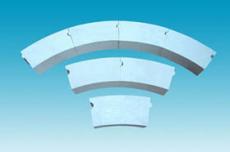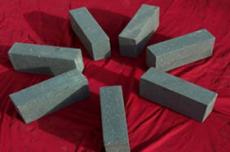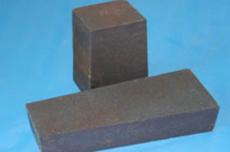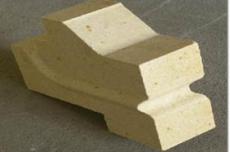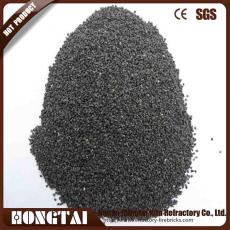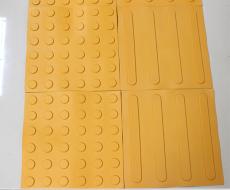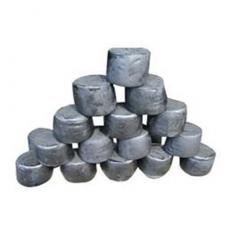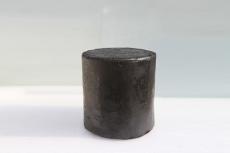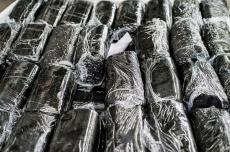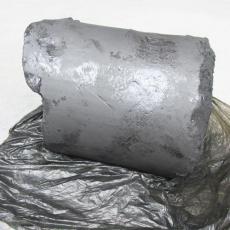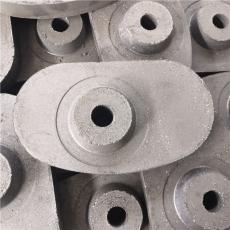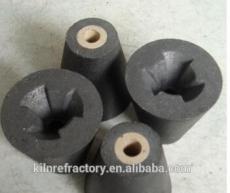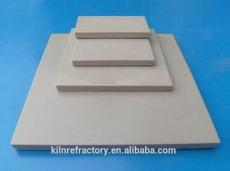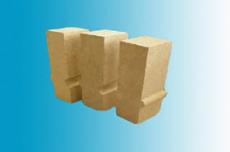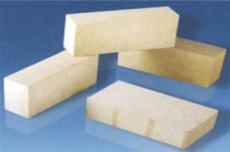
Magnesium Carbon Bricks
When MgO-C bricks are used in refining ladle furnaces and ladles, they are mainly used in the clearance and slag line. According to the operating conditions, the refractory materials used in these parts must be resistant to high temperatures, thermal shock, and mechanical corrosion caused by slag erosion. Therefore, magnesium-chromium refractory materials were used in these parts in the past, but considering the pollution of chromium to the environment, its use has been reduced, and now magnesium carbon bricks are used. Due to the serious damage of magnesium carbon bricks in the new ladle during the preheating process, the loose decarburization layer can reach 30 to 60 mm thick. This layer is washed away during the injection of molten steel and the magnesium sand particles are brought into the slag. Obviously, preventing the carbon in the magnesium carbon bricks from being burned during preheating becomes one of the important steps to increase the service life of magnesium carbon bricks in the clearance and slag line of the ladle. Its technical measures, in addition to adding composite antioxidants to magnesia carbon bricks, the key is to cover the surface of magnesia carbon bricks with alkali-containing low-melting glass phase liquid after lining, so as to protect the carbon in magnesia carbon bricks from being burned during the preheating process of the ladle.
PART01 The use of magnesia carbon bricks on converter lining
Due to the different use conditions of various parts of the converter working lining, the use effect of magnesia carbon bricks is also different. The furnace lining is constantly impacted by cold and hot molten steel, so the refractory materials used for the furnace mouth must be resistant to the scouring of high-temperature slag and high-temperature exhaust gas, and not easy to hang steel and easy to clean in time. The furnace cap is not only subject to severe slag erosion, but also to rapid cooling and heating temperature changes, as well as the combined effects of high-temperature airflow due to carbon oxidation and high-temperature exhaust gas scouring of dust, so magnesia carbon bricks with strong slag erosion resistance and spalling resistance are used. The charging side requires that magnesia carbon bricks have high resistance to slag erosion, high temperature strength and good anti-stripping performance. Therefore, high-strength magnesia carbon bricks with metal antioxidants are usually used. Studies have shown that the high-temperature strength of magnesia carbon bricks with metal aluminum added at lower temperatures is lower than that of samples with composite additions of metal aluminum and metal silicon, but at high temperatures, its high-temperature strength increases. The slag line is the junction of the three phases of furnace lining refractory materials, high-temperature molten slag and furnace gas. It is the part most seriously corroded by slag. Therefore, it is necessary to build magnesia carbon bricks with excellent resistance to slag erosion. Magnesia carbon bricks with a higher carbon content are required at the slag line.
PART02 Use of magnesia carbon bricks in electric furnaces
At present, almost all the walls of electric furnaces are built with magnesia carbon bricks. Therefore, the life of magnesia carbon bricks determines the service life of electric furnaces. The main factors that determine the quality of magnesia carbon bricks for electric furnaces include the purity of magnesia sand, the type of impurities, the bonding state of periclase grains and the grain size of MgO source; the purity, degree of crystallization and flake size of flake graphite as the source of carbon introduction; thermosetting phenolic resin is usually used as a binder, and the main influencing factors are the amount of addition and the amount of residual carbon. It has been proven that adding antioxidants to magnesia carbon bricks can change and improve their matrix structure, but when used under normal operating conditions of electric furnaces, antioxidants are not necessary components of magnesia carbon bricks. Only when used in electric arc furnaces with high FeOn slag, such as using direct reduced iron or irregularly oxidized parts and hot spots of electric furnaces, can various metal antioxidants be added to become an important part of magnesia carbon bricks. The corrosion behavior of magnesia carbon bricks used in slag lines is manifested as the formation of obvious reaction dense layers and decarburized loose layers. The reaction dense zone is also called the slag invasion zone, which is the erosion area where the high-temperature liquid slag penetrates into the brick body after the magnesia carbon brick is decarburized to form a large number of pores. In this area, FeOn in the slag is reduced to metallic iron, and even the desolvated phase and intergranular Fe2O3 dissolved in MgO are also reduced to metallic iron. The depth of slag penetration into the brick is mainly determined by the thickness of the decarburized loose layer, and usually ends at the place where the residual graphite remains. Under normal circumstances, the decarburized layer in the magnesia carbon brick is relatively thin due to the presence of graphite. There are two ways to tap the steel at the tapping port of the electric furnace: tilting the steel tapping trough and tapping the steel at the bottom of the furnace. When the steel tapping trough is tilted, magnesia carbon bricks are basically not used, but Al2O3 or ZrO2 are selected, and non-oxygen substances such as C, SiC and Si3N4 are added. When the bottom of the furnace is used for tapping, the tapping port is composed of an external sleeve brick and an internal tube brick. The furnace bottom tapping port uses magnesia carbon brick tube bricks, and the hole size of the tube bricks is determined by factors such as furnace capacity and tapping time. The general inner diameter is 140~260mm. A steel plant electric furnace uses medium-range and low-range magnesia carbon bricks at the tapping port, and the two sides of the copper tapping port replace the sintered magnesia bricks originally used to achieve good results. The furnace life has increased from about 60 furnaces to more than 1 times. After use, the magnesia carbon bricks at the slag line remain relatively intact and do not stick to the slag. The slag line does not need to be supplemented, which reduces labor intensity and improves the purity and productivity of molten steel.
PART03 The use of aluminum-magnesium carbon bricks on the ladle
When MgO-C bricks are used in refining ladle furnaces and ladles, they are mainly used in the clearance and slag line. According to the operating conditions, these parts require that the refractory materials used must be resistant to high temperature, thermal shock, and mechanical corrosion caused by slag erosion. Therefore, these parts used to use magnesia-chromium refractory materials, but considering the pollution of chromium to the environment, its use has been reduced, and now magnesia carbon bricks are used. Since the magnesia carbon bricks in the new ladle will be seriously damaged during the preheating process, the loose decarburized layer can reach 30 to 60 mm thick. This layer is washed away during the injection of molten steel and the magnesia sand particles are brought into the slag. Obviously, preventing the carbon in the magnesia carbon bricks from being burned during preheating becomes one of the important steps to increase the service life of the magnesia carbon bricks in the ladle clearance and slag line. Its technical measures, in addition to adding composite antioxidants to the magnesia carbon bricks, the key is to cover the surface of the magnesia carbon bricks with alkali-containing low-melting glass phase liquid after lining to protect the carbon in the magnesia carbon bricks from being burned during the preheating process of the ladle.
